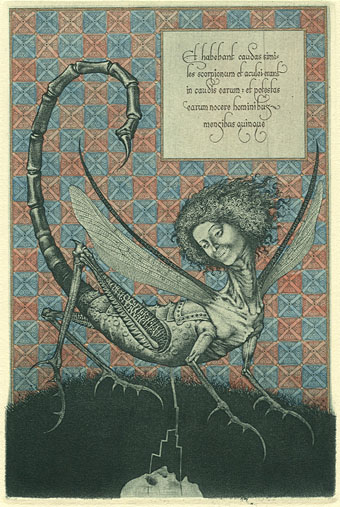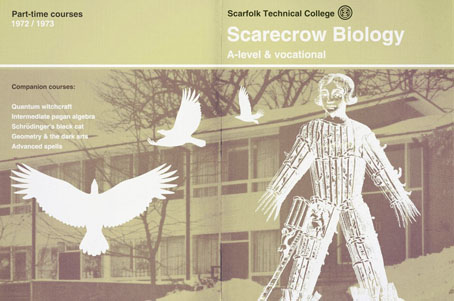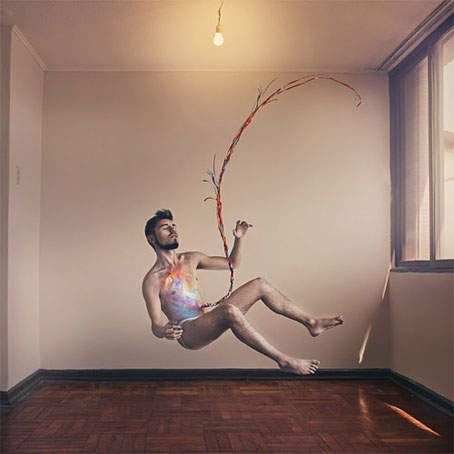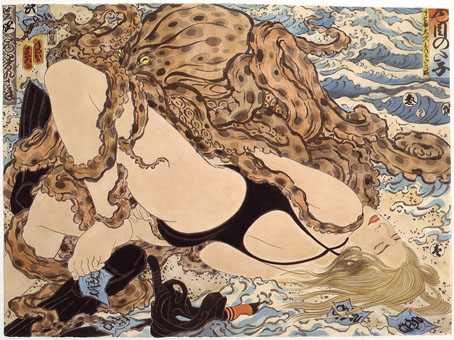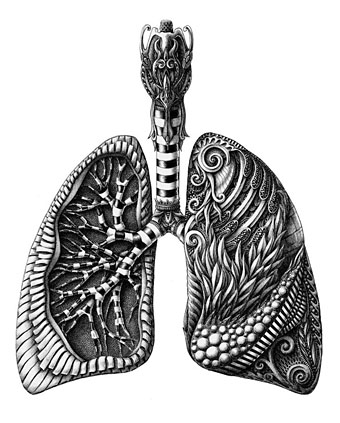Bestia Apocalypsi (2000) by Konstantin Kalynovych.
• A funding page for Better Things: The Life and Choices of Jeffrey Catherine Jones, Maria Paz Cabardo’s documentary film about the late comic artist and illustrator.
• Phantasmaphile’s Pam Grossman has declared 2013 to be the Year of the Witch.
• At WFMU: The Space Ghost Coast To Coast Sonny Sharrock Tribute Episode.
I think that mass culture is idiotic. I always have. Even things that are the sort of trendy new whatevers, it’s always about money and sex and nothing else.
Laurie Anderson on music for dogs and Obama.
• It’s that…thing…again. Clive Hicks-Jenkins on his new Mari Lwyd designs.
• Rick Poynor’s Dictionary of Surrealism and the Graphic Image.
• “Why do gay porn stars kill themselves?” asks Conner Habib.
If you’re staycationing in Scarfolk this year you’ll be pleased to hear the town now has 20% less rabies. Above: The 1972–73 prospectus for scarecrow and wicker man biology at Scarfolk Technical College. Related: A Day At The Seaside. I guessed the source even without the cryptic comments. Can you?
• Laurie Spiegel designed a T-shirt for The Wire magazine.
• Julia Holter covers Chiamami Adesso by Paolo Conte.
• Strange Attractor has two new Austin Spare prints.
• Forgotten Women Designers and Illustrators.
• RIP Alan Sharp, a sharp screenwriter.
• “Can You Pass the Acid Test?”
• Sonny and Linda Sharrock live at WKCR 03/21/74 | Many Mansions (1991) by Sonny Sharrock | Ghost Planet National Anthem (1993) by Sonny Sharrock

